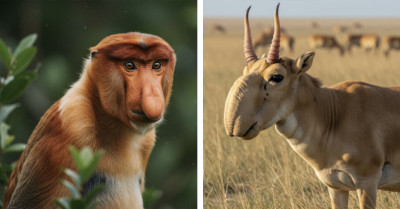Here’s A Look At The World’s Largest Spider That’s Moved Into Northern South America
Nature is a crazy thing, and many people have encountered some really odd animals and insects, but giant spiders seem like something out of a horror movie. Spiders are definitely one of people’s biggest fears, as many humans suffer from arachnophobia. However, even if you don’t, you might after seeing this giant spider.
Many of us imagine large breeds of spiders living in places like Australia, where we usually see these giant eight-legged creatures. However, the world’s largest spider has actually moved into South America, and you might be stunned by how big these spiders really get.
Many of us can’t deal with smaller spiders around our homes or outside, much less a giant spider the size of a large dinner plate. What’s crazier is that these aren’t even the biggest spiders to exist, but they are the world’s largest spiders as of now.
If you’re interested in seeing what these spiders look like, where they are found, and just want to know more about them, then keep on reading because we’re going to give you a full look at these giant eight-legged friends and what you should know about them.
Let’s dive in and see what we know about these big guys.
The giant spider breed that we’re looking at is the Goliath Birdeater.
This spider is named the world’s largest spider, and for good reason. The Goliath Birdeater, or Theraphosa blondi, is the largest spider ranked by its mass and overall size.
Surprisingly enough, these spiders are actually not venomous at all. Their size is enough to scare away large animals (and humans), but according to National Geographic, their bites might cause a sting, but they aren’t venomous.
Typically, this spider can weigh about 6 ounces and can grow to about 11 inches long. The body alone can measure about 5 inches, and the spider’s size is usually compared to that of a dinner plate.

I honestly might cry if I saw this beast in person.
This spider usually lives in burrows as it awaits prey. It is even considered a delicacy in South America, as it is roasted and served in banana leaves as a dish.
The Goliath Birdeater got its name from an 18th-century engraving that showed a tarantula eating a hummingbird. Despite its name, this Goliath Birdeater actually doesn’t feast on birds often, even though it could because of its size.
This spider also doesn’t have great vision despite having eight eyes. It relies on hairs on its body that sense vibrations instead of utilizing its eyes.

These vibrational hairs are prominent on this eight-legged spider.
The spider rubs its legs together to send tiny hairs with tiny stingers into its prey as a defense mechanism. Doing this also creates a hissing noise, which can deter predators.
The hissing can be heard about fifteen feet away, which is beneficial for keeping predators far from the spider. When it feels threatened, it can also stand on its hind legs to show its sharp fangs to the predator.

The Impact of Arachnophobia
Arachnophobia, the fear of spiders, is a common issue that affects many individuals, causing significant anxiety and distress. Dr. Ramani Durvasula, a clinical psychologist, emphasizes that understanding the roots of such fears is essential for effective management.
She suggests exposure therapy as a practical improvement method, which involves gradual exposure to the object of fear in a controlled environment. This approach can help desensitize individuals and reduce anxiety over time, leading to a healthier relationship with these creatures.
The discovery of the world’s largest spider making its way to Northern South America has caught the attention of arachnologists worldwide. According to Dr. Steven Pinker, a cognitive scientist, our reaction to such creatures often reflects deep-seated cultural fears and misconceptions about nature.
He notes that while spiders play critical roles in ecosystems, including pest control, public perception often leans towards fear rather than appreciation. Educating communities about the ecological benefits of spiders can foster a more balanced view and reduce irrational fears.
After hearing about all of the awesome things this spider can do, it’s actually a little less scary and a lot cooler. However, this spider is still giant, and it’s crazy to believe that some people are eating these as a delicacy when most of us would be stepping on it as fast as we could.
Would you ever eat a spider?
Therapeutic Insights & Recovery
The fascination and fear surrounding giant spiders highlight the need for a better understanding of these creatures within our ecosystems. As noted by Gretchen Rubin, happiness researcher, "Knowledge is a powerful antidote to fear; when we understand something, we can appreciate it rather than fear it." By incorporating educational programs that explain the ecological significance of spiders, we can shift societal narratives from fear to respect, ultimately benefiting both humans and the environment. Awareness and knowledge can create a healthier coexistence.



